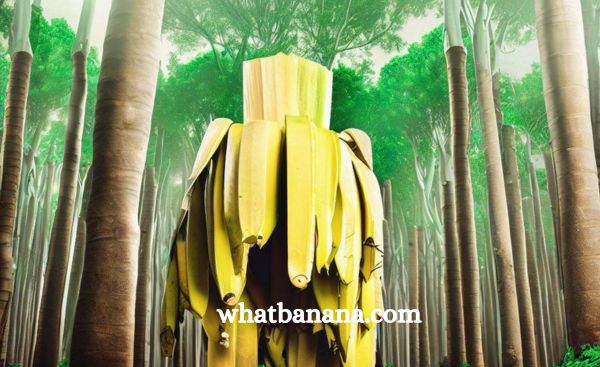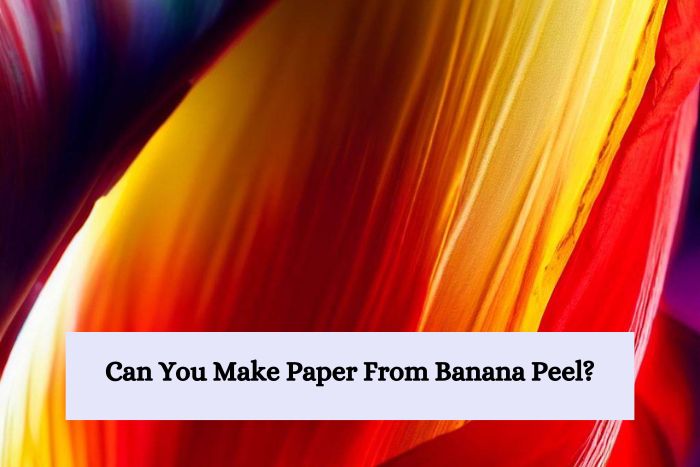Is it really possible to make paper out of leftover banana peels?
Let’s learn about the realm of environmentally sustainable banana innovation.
Is it really feasible to create something genuinely remarkable out of all those waste banana peels?
We need to know more about this eco-friendly concept!
What is the magic ingredient in the banana peel that makes this possible?
Are there any potential benefits for our endangered environment?
Does the paper smell like bananas?
From the process of making banana peel paper to its practical applications, it’s all here!
Can we really put our food waste to good use and save trees?
🍌 Five Differences Between Banana Peel Paper and Conventional Paper 📝 |
|
|---|---|
| Banana Peel Paper | Conventional Paper |
| Made from banana peel fibers 🍌 | Made from wood pulp 🌲 |
| Sustainable and eco-friendly ♻️ | May contribute to deforestation 🌳 |
| Naturally yellowish color 🟡 | White or bleached color ⚪ |
| Unique texture and feel 🌟 | Standard paper texture ✏️ |
| May have slight banana scent 🍌👃 | Odorless or chemically scented ❌👃 |
| Brought to You by whatbanana.com | |
Banana Peels: The Surprising Key to Sustainable Paper?
Banana peel can be transformed into paper through a process that involves boiling, blending, and drying. The cellulose fibers present in banana peels are extracted and mixed with additives like recycled paper scraps to create pulp. This pulp is then spread out and dried, resulting in a cohesive sheet of paper. Repurposing banana peels into paper offers a sustainable alternative to traditional paper production, reducing waste and conserving natural resources.
Can Banana Peels Really Be Turned into Paper?
So, this sounds like a trick question, surely it’s not possible to turn banana peel into paper?
Surprisingly, the answer is a very definite yes!
The reason for this is that banana peels contain cellulose fibers.
These fibers can be extracted and processed and turned into pulp, which is the start of the process of making paper.
You can see already that something which is typically thrown away could be transformed into a useful substance!
You can even try this yourself, and the process starts with boiling the peels to soften them, blending them to form the pulp, and then mixing them with scraps of recycled paper.
Next, simply spread out the mixture and let it dry.
And there you are, you have banana peel paper!
It won’t be smooth, it will have an uneven texture, and it will actually still smell of bananas!
It’s a fun and creative way to use up food waste, and could also potentially save trees!
Imagine how many banana peels are thrown away every day; surely we could make use of them and not need to cut down so many forests?
It would undoubtedly help the environment and could save the natural habitats of many creatures.

What Is the Science Behind Banana Peel Paper-Making?
Now, let’s delve into the science a little bit more, as to how the process works.
So, if we look at the composition of banana peel, it is 40% cellulose, and this is the first building block when making paper.
Cellulose is actually what is known as a complex carbohydrate, and is found in plant cells, adding structure and strength.
It is a series of long fibers, connected together.
There are several steps when making paper, starting with cleaning the banana peels to remove any residue and impurities.
Next, they are boiled, which softens the fibers and breaks down the structure of the peel.
Boiling should also remove the color and the odor from the peel, but realistically, there will always be a faint yellow color and a hint of banana!
Blending is next, which creates a pulpy mixture, but at this stage, it will be quite wet.
Scraps of paper need to be added to give the paper strength and bind it together.
The resulting pulp is then spread out on a mold or a screen to allow the excess water to drain.
The rest of the water will evaporate, allowing the cellulose fibers to bond together, forming a recognizable sheet of paper!
Any remaining moisture can be removed by gently heating the paper.
And there you have it; food waste turned into a useful, sustainable material!

What Are the Potential Benefits of Using Banana Peels for Paper?
- Sustainability: Banana peels are abundant organic waste that often ends up in landfills, contributing to the release of harmful greenhouse gases. By utilizing them for paper production, we can reduce waste and promote a circular economy.
- Conservation of Resources: Traditional paper production requires cutting down trees, which has a significant impact on forests and biodiversity. Shifting to banana peel paper can help conserve our precious natural resources, as it reduces the demand for wood pulp.
- Versatility: Banana peel paper offers a unique texture and appearance that sets it apart from conventional paper. It can be used for various creative projects like crafting, scrapbooking, and even artistic endeavors where its distinct visual appeal can add a touch of originality.
- Educational Potential: Imagine the educational opportunities that arise from using banana peels for paper in schools. Students can learn about sustainability, recycling, and creative problem-solving while having fun making their own banana peel paper.
How Can We Use Banana Peel Paper in Practical Applications?
- Artistic Expression: Banana peel paper’s distinct texture and natural hues make it a perfect canvas for artists. It can be used for painting, drawing, printmaking, or even as a unique background for mixed media art. Its organic and eco-friendly nature adds an extra dimension to the creative process.
- Eco-Friendly Packaging: With the growing emphasis on sustainable packaging, banana peel paper presents an excellent alternative. It can be used to create eco-friendly packaging materials like boxes, bags, or wrappers for small items. This way, we can reduce our reliance on single-use plastics and opt for a greener packaging solution.
- Stationery and Paper Products: Imagine receiving a greeting card or writing a letter on paper made from banana peels! The unique texture and earthy feel of banana peel paper can bring a touch of eco-consciousness to stationery and paper products. It’s a small yet impactful way to incorporate sustainability into our daily lives.
- Crafts and DIY Projects: From origami to handmade journals, banana peel paper can be a fantastic material for a wide range of crafts and DIY projects. Its pliability and strength make it suitable for folding, cutting, and shaping into various forms. Let your creativity run wild and explore the possibilities!
How to Convert Banana Fiber to Paper
Key Takeaways
- Banana peels can be boiled, blended, and dried to create paper, thanks to their cellulose fibers.
- The process involves extracting the fibers, mixing them with additives like recycled paper scraps, and forming a pulp.
- This pulp is spread out and dried, resulting in a cohesive sheet of paper with a unique texture and appearance.
- Repurposing banana peels into paper reduces waste and promotes sustainability by conserving natural resources.
- For example, imagine using banana peel paper to create eco-friendly packaging or as a canvas for artistic expression, adding a touch of creativity and sustainability to everyday life.
In conclusion, the innovative concept of making paper from banana peels opens up exciting possibilities for sustainability and creativity.
Imagine the impact we can make by reducing waste and conserving resources while exploring unique artistic and practical applications.
Ready to give banana peel paper a try?
How will you use this eco-friendly alternative in your own creative endeavors?
